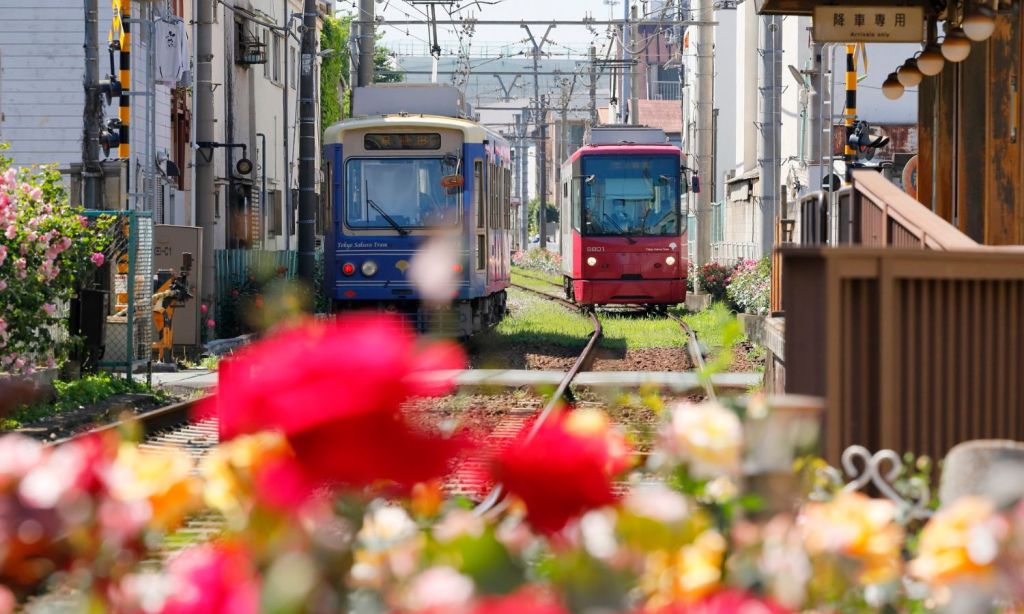Think you know Tokyo well? Even seasoned visitors might be missing out on some of the city’s most culture-soaked neighbourhoods, heading instead to visit and stay in the popular but tourist-packed districts Asakusa, Shibuya, Shinjuku, and Ginza.
If you’re looking for something different and more authentic, though, neighbourhoods in Tokyo’s less-frequented ‘Old Tokyo’ downtown, referred to as ‘shitamachi’ areas, are certainly worth checking out.
Not only will the locals be delighted to see you and appreciate you supporting the economies away from the tourist-heavy places, but you’ll also be pleased to find yourself away from the crowds, treated to a much slower-paced experience.
If you’re not sure where those places are, not to worry, we’ve done the work for you. Ahead, we round up three lesser-known Tokyo districts, all in ‘Old Tokyo’, culture-rich and worthy of a visit.
Shibamata
Shibamata in northern Tokyo is well-known by most Japanese people, but few have actually visited it. The town is famous for being the hometown of the main character in Japan’s long-running comic series Otoko wa Tsurai, which translates to It’s Tough Being a Man.

The series follows the adventures and misadventures of an optimistic romanticist as he navigates his way through a challenging life. A constant here is the lead actor coming back home to his family home, a dango (rice dumpling) shop in Shibamata, and Taishakuten Sando, a charming and traditional shopping street.
Visiting this street yourself is like stepping back in time, many of the buildings and what they sell retain the old-world feel. Sample local treats like mugwort rice dumplings (kusa dango) and rice crackers (sembei).
At the end of the shopping street, the neighbourhood’s namesake, Shibamata Taishakuten Buddhist temple, built in 1629, features striking architecture with exquisite wood carvings around the structure depicting the teachings of Buddha.

Next door to the temple is the mansion of a wealthy merchant from the 1920s, Yamamoto Tei, that you can visit. It features a garden with a pond and waterfall.
Shibamata is easily accessed by train. You’ll see a statue of Tora-san, the main character from the movies, in front of the station. Feeling adventurous? You might wish to experience the only surviving Edo-era ferry in Tokyo at the Yagiri no Watashi crossing the Edo River, which connects Shibamata to Matsuda City in the neighbouring Prefecture.
Minowa
Minowa is just two stops from Ueno Station on the Tokyo Metro Hibiya Line and not far from Asakusa, yet most visitors, let alone Japanese people, are unaware of this hidden gem.
The place has a real downtown ‘shitamachi’ feel to it. Browse shops ranging from grocery stores to clothing boutiques at its covered Joyful Minowa Shopping Street. Also, be sure while you’re there to sample local snacks and pop into retro coffee shops.

Head to Toden Café near the entrance of this shopping street after your shopping. It offers burgers, pastas, and curries and often has live entertainment. You can even stay the night at the Toden Hotel upstairs.
Minowabashi, not far from the shopping street, is the last stop on the city’s only surviving tram line, the adorable Tokyo Sakura Tram (Toden Arakawa Line).
Twice a year, May to June and October to November, you will see hundreds of roses in bloom at the Minowabashi tram stop. Another unexpected Tokyo delight.
Monzen-Nakacho
Monzen-Nakacho Station is about 10 minutes from Otemachi Station on the Tokyo Metro Tozai Line. It’s home to two important places of worship in Japan: Fukagawa Fudodo and Tomioka Hachimangu Shrine.

The district, along with the next-door neighbourhood, Fukagawa, retains a real sense of the Edo era (the period between 1603 and 1867 in Japan) with many old-fashioned local shops and places to eat and drink. The narrow streets leading to the main attractions are filled with activity.
By night, head for Tatsumi Shindo, an alleyway packed with izakaya, which are small Japanese bars. Spend an evening barhopping there, while sampling local food like yakitori. It’s also a great opportunity to meet locals.

The area is well-known by locals for its spectacular scenery along the Oyokogawa River, particularly during cherry blossom season. It’s much less crowded than many of the famous sites.
Related: 7 Tokyo Stays That’ll Let You Experience Authentic Japanese Culture
Related: Bowing, Slurping, and 8 Other Need-to-Know Japanese Table Manners
Read more stories from The Latch and subscribe to our email newsletter.







